
NEW YORK NY – Butterflies are cold-blooded creatures that rely on weather conditions to regulate their body temperature. Experts say they usually prefer warm and sunny conditions. But even if Mother Nature occasionally throws a rainy or chilly temper tantrum, every day’s a butterfly day at the American Museum of Natural History in New York City (below).
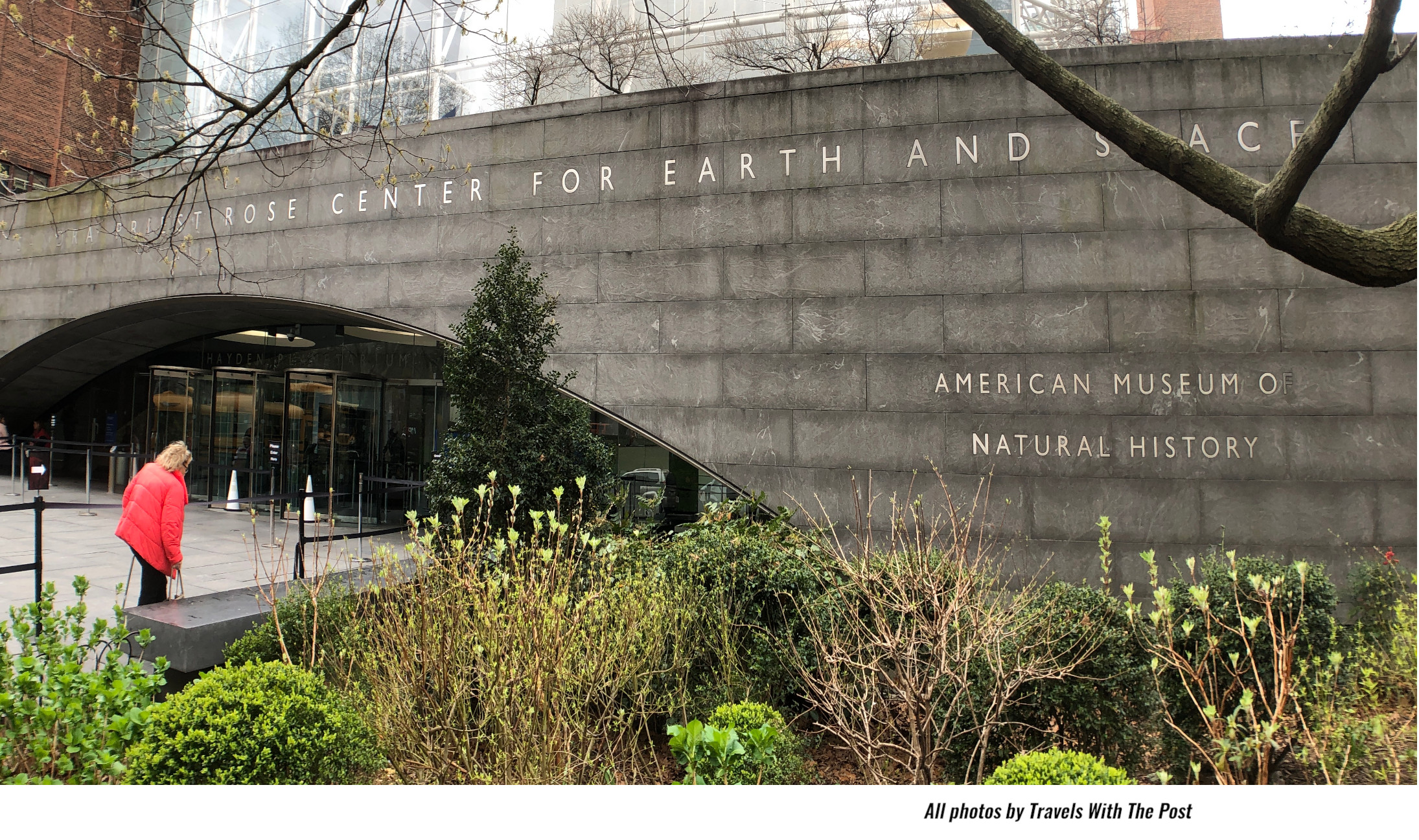
A road trip Saturday (April 13, 2024) brought Travels With The Post to the museum at 200 Central Park W., in part to see its continually popular Davis Family Butterfly Vivarium. It is home to roughly 80 different live species of butterflies and moths, among what the museum said is about 160,000 species known to exist.
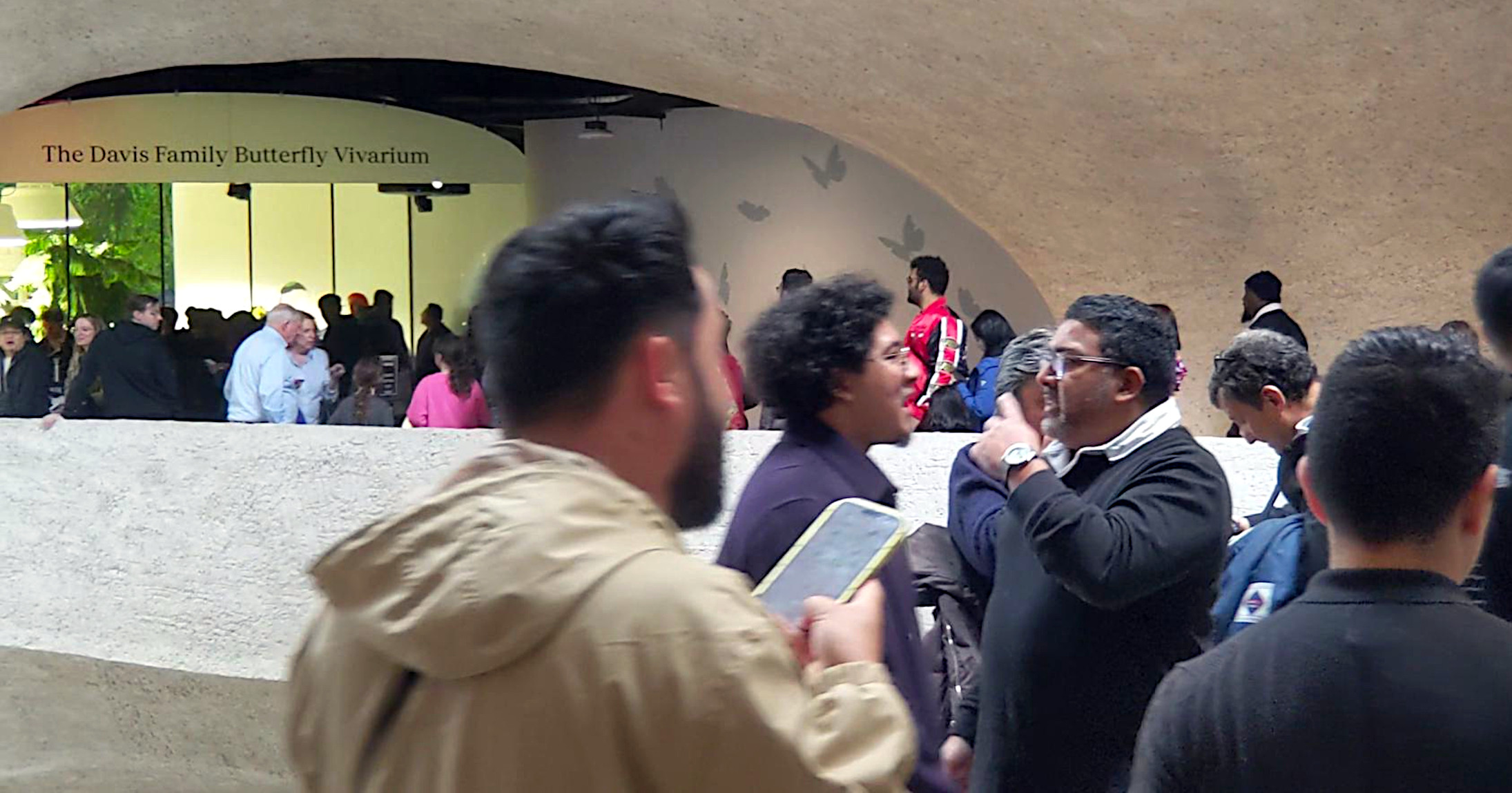
The museum once held only seasonal displays of the colorful and flittering fliers. They proved so enticing to the public that it created a year-round, 80-degree, controlled high-humidity butterfly enclosure inside the building on its second floor. Saturday’s line to get in (above) included more than 100 people at any given time, but moved quickly across the floor’s lobby.
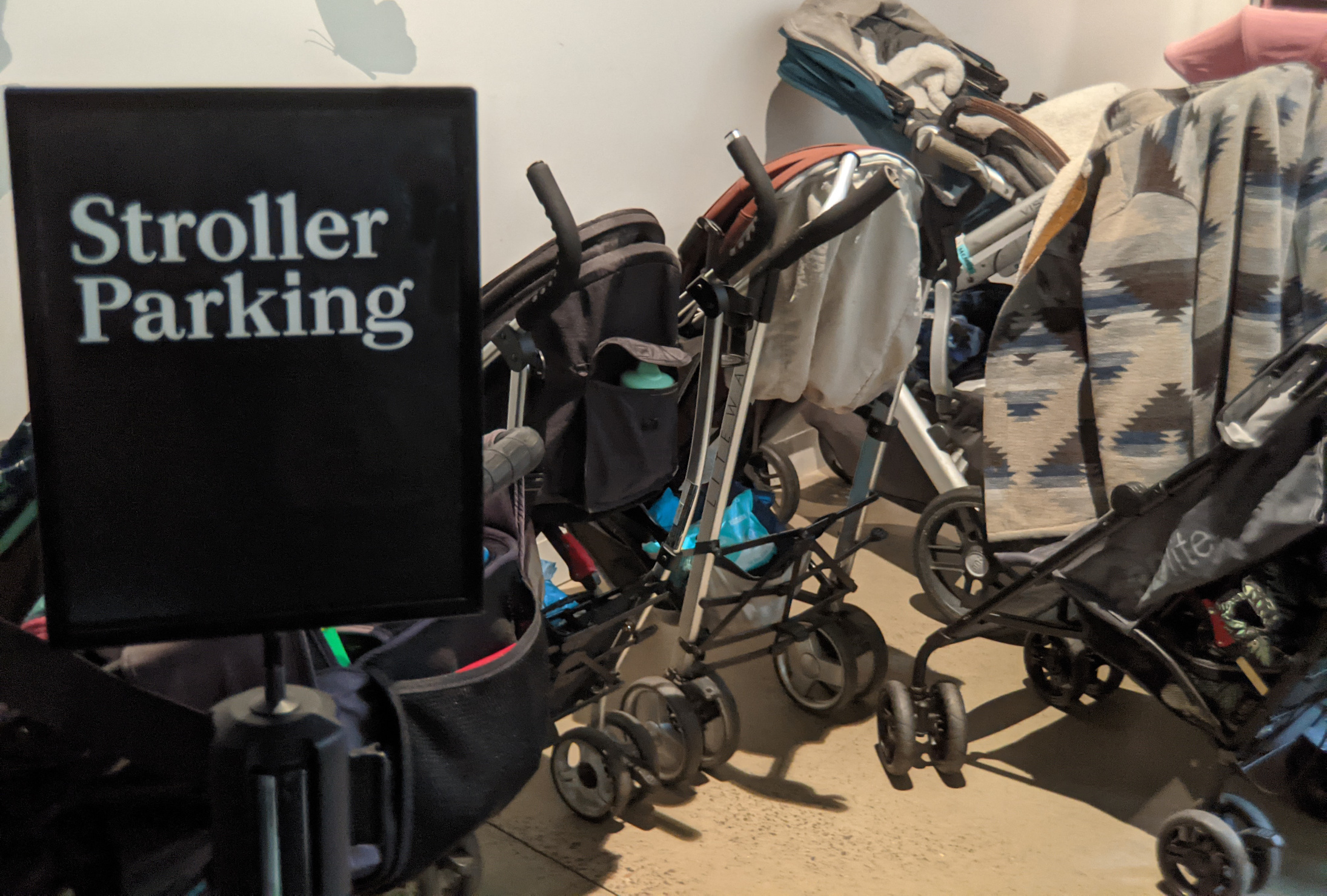
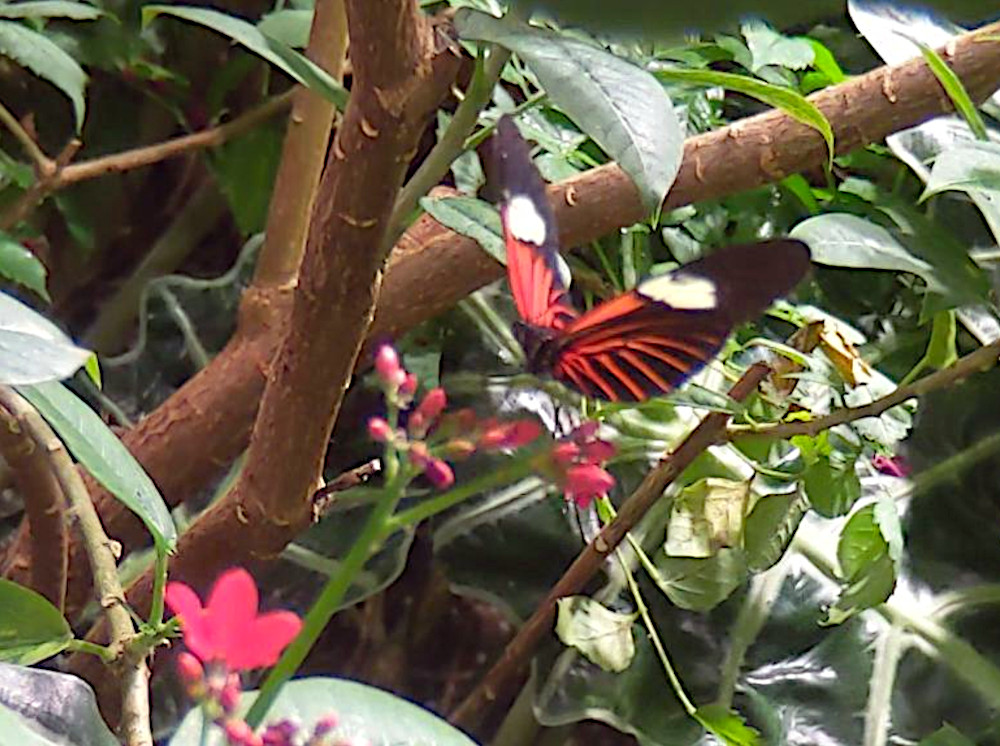
Human admirers are admitted into the vivarium on a ticketed, timed-visit basis to ensure the space never becomes too crowded. A fleet of children’s strollers (above), banned from the exhibit, stands empty in a hallway lot outside its doors. Meanwhile, sealed visitors’ entrance and exit chambers keep the butterflies inside, where they live in micro-environments suited to them (at right).
They are well protected, feed on flower nectars and the juice of sweet fruits like oranges (at top), and do what they do noticeably well: fly. On Saturday their wings sent them bouncing everywhere, and alighting (below) on almost anything.
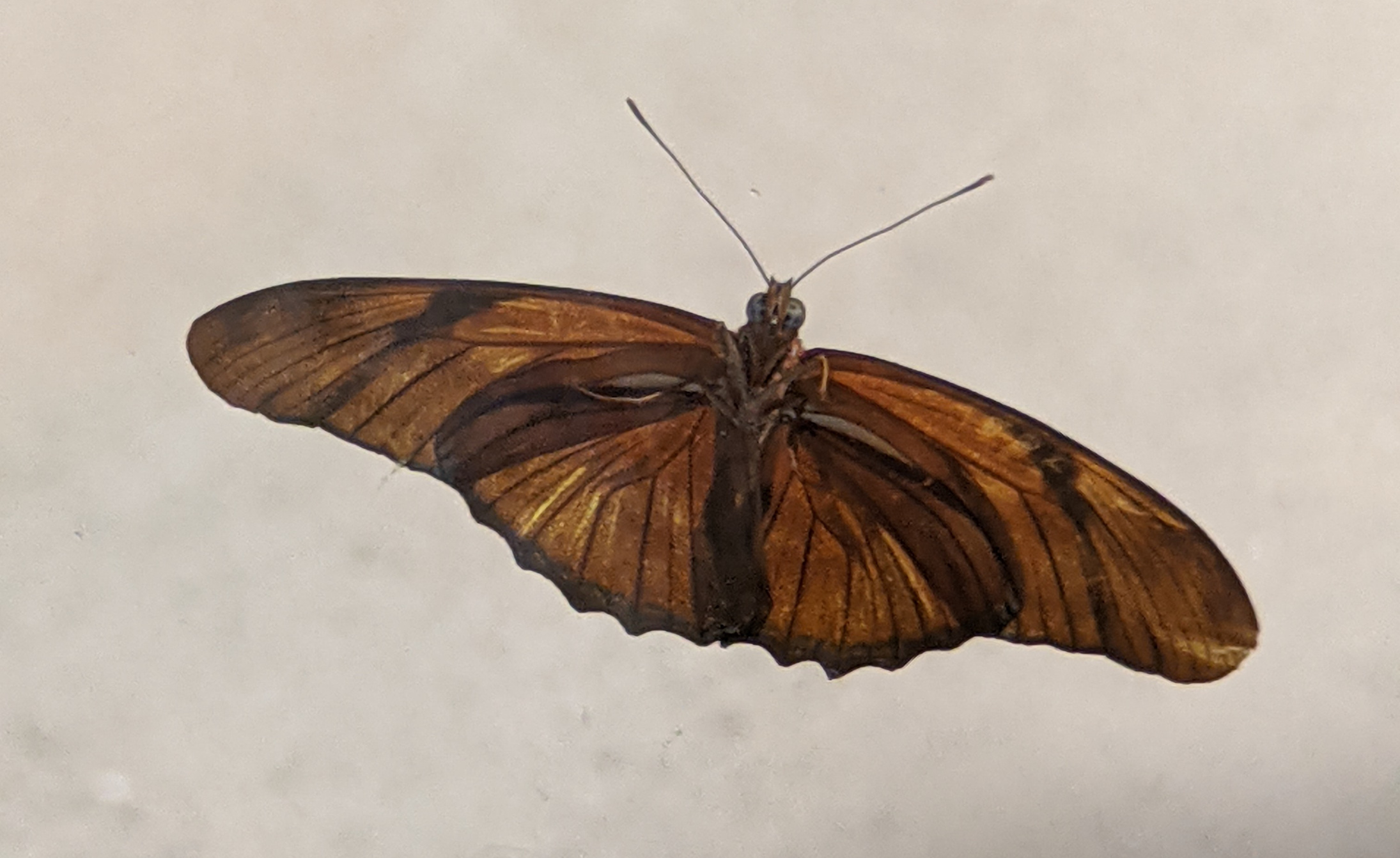

Butterflies could be seen clinging upside-down to the ceiling. They attached themselves to windows, on the opposite side of which were awe-struck kids who tried in vain to touch them (above). They also calmly fluttered from flower blossom to blossom to fulfill their most important role in nature, pollinating plants to reproduce and grow.
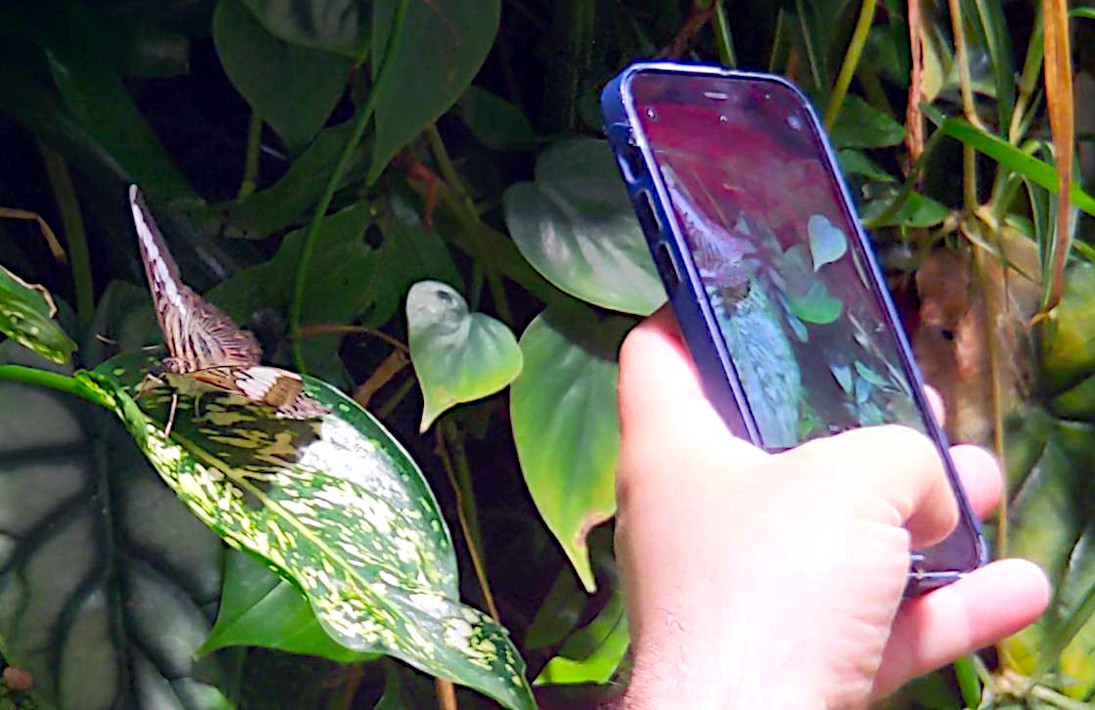
And every once in awhile, butterflies landed on the outstretched fingers, rounded shoulders, and hair-topped heads of touring guests. Smartphone camera shutters clicked at any nearby touch-down (above). Vivarium staff members said that’s an all-too-common sight to them but, unsurprisingly, always an act of wonder to visitors.
Depending on the species, butterflies generally live for only a few weeks. Some that migrate can live as long as 11 months. To ensure the vivarium is continually populated, it also contains an pupae incubation area. That’s where visitors can, at a distance, examine chrysalises – the hard protective shells in which caterpillars grow into adults – and watch as butterflies emerge from them (below).
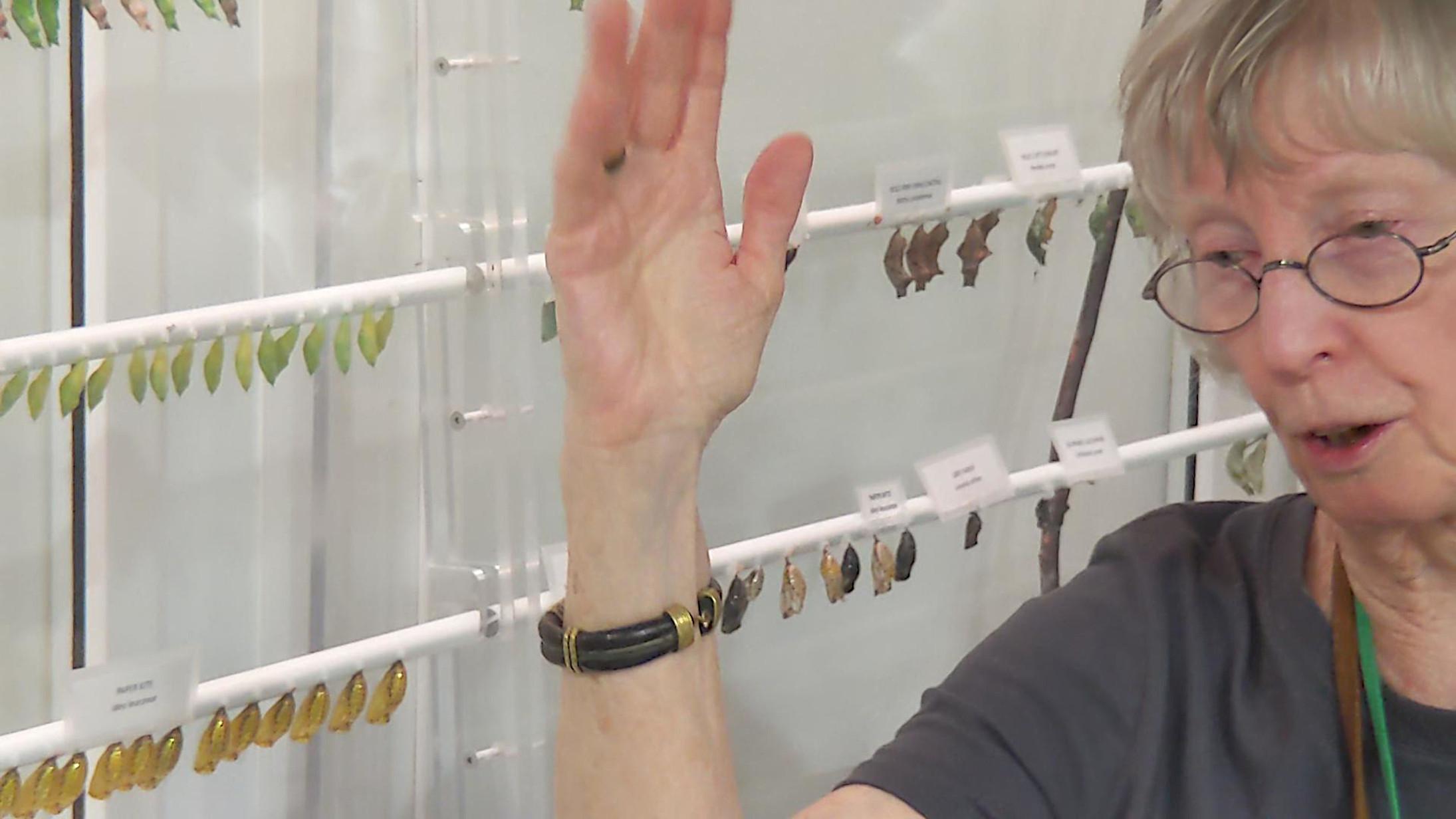
The museum posts a daily list of butterflies available to be seen, accompanied by illustrated cards so they can be easily identified. Some interactive displays included fixed and lighted magnifying glasses, allowing the intricate details of butterfly or moth colorations to be viewed in close detail.
All around the room, staff members are available to answer questions and prompt discussions.
Things to know if you go
Traveling from Pottstown involves a slightly more than two-hour drive covering about 130 miles. The museum can be reached by car using U.S. Route 422, the Pennsylvania Turnpike (Interstate 276) and the New Jersey Turnpike (Interstate 95). The trip may take longer when traffic congestion is at its peak.
Saturday’s museum excursion was the first to that location for Travels With The Post, and the vivarium visit took less than an hour to complete. The museum itself, however, is a sprawling, four-floor complex with more than 40 separate themed galleries, several theaters, interactive exhibits, restaurants, snack shops, museum stores, and an adjacent parking garage. Spending a full day there is said to be common.
Accompanied by other adults and two young children, Travels With The Post browsed through four additional galleries on three floors during a four-hour stay. Elevators moved guests from floor to floor with little wait time, but take the stairs if you prefer. Be prepared for plenty of walking on each floor. There also is an abundance of places to stop and rest comfortably.
The museum is open daily, Monday through Sunday, from 10 a.m. to 5:30 p.m. It closes only on Thanksgiving and Christmas. Find details online about obtaining tickets and admission costs; special ticketed exhibitions; parking costs; and admission for members of the military and their families.
Hit the road with us
Travels With The Post periodically publishes stories about places it visits and things experienced while there. This is the 16th installment in the series, following a hiatus of five months. Read others here.
All photos and video by Travels With The Post
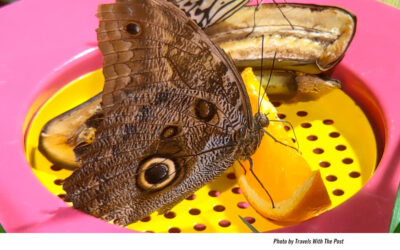
 Foodie: Gazzos Watch, A New Martini, and ‘Special’ Oreos
Foodie: Gazzos Watch, A New Martini, and ‘Special’ Oreos